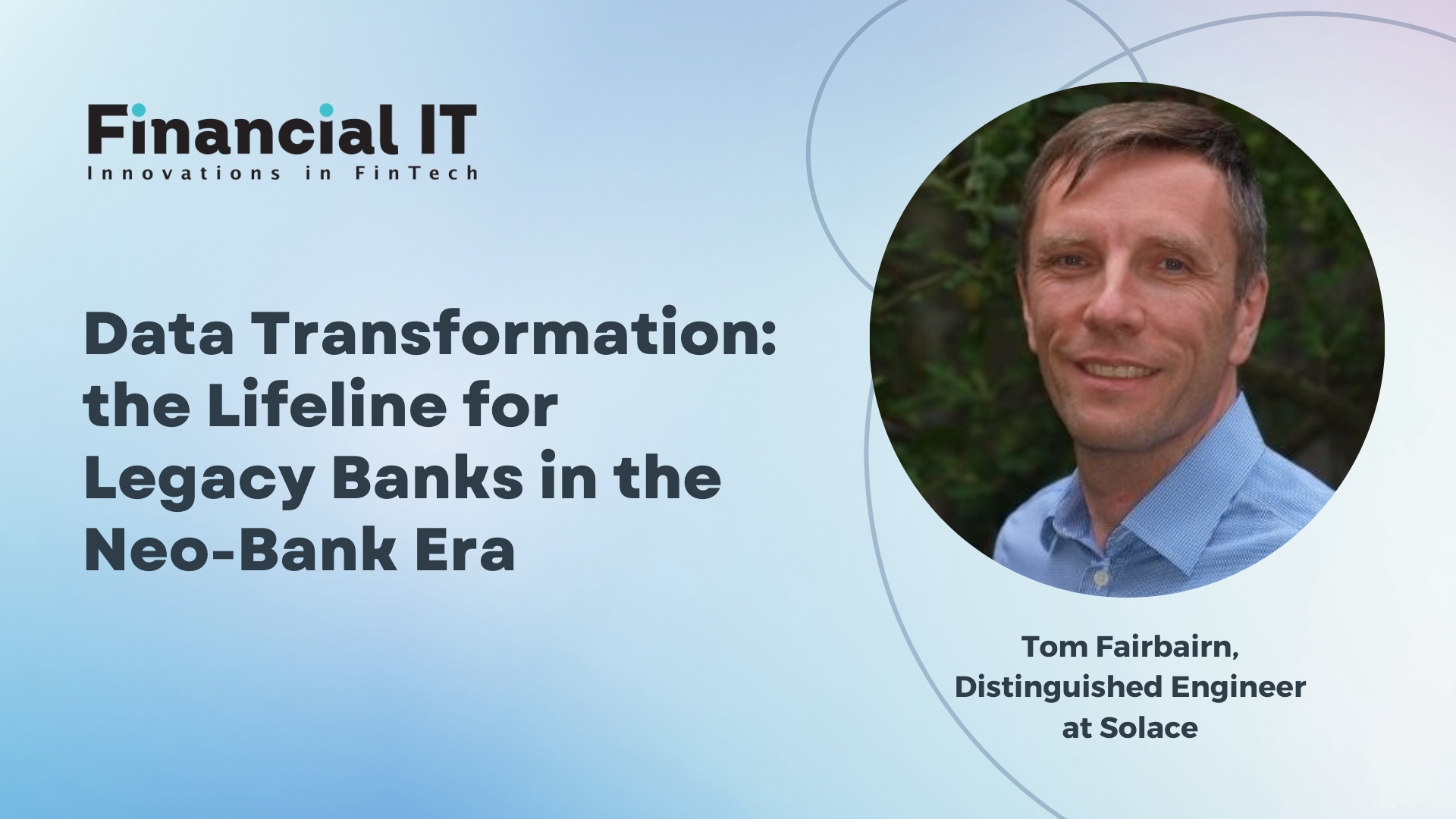Data Transformation: The Lifeline for Legacy Banks in the Neo-Bank Era

- Tom Fairbairn, Distinguished Engineer at Solace
- 31.07.2024 01:30 pm #banks #data
The financial sector is undergoing a seismic shift. New, digitally-native challenger banks, referred to as neo-banks, are rapidly capturing market share with their sleek interfaces, agile processes, and data-driven approach. These include the likes of Monzo and Starling. To survive and thrive in this new landscape, legacy banks must embrace new technologies and specifically leverage their data as their key weapon.
Data-driven transformation usually refers to the process of converting raw data into usable insights that can drive business value. In the financial sector, this involves integrating siloed data sources, enriching existing data, and leveraging modern analytics tools to extract valuable customer insights. This becomes the fuel for innovation, allowing banks to personalise experiences, make real-time decisions, and comply with ever-evolving regulations.
The legacy bank obstacle
However, legacy banks face a significant hurdle: their legacy data infrastructure. Built for a bygone era, these systems are often characterised by data silos – isolated pockets of information that don't communicate with each other. Outdated technology stacks further impede agility and scalability, hindering the ability to process and analyse vast amounts of data efficiently.
The consequences of not transforming are stark. Imagine a bank struggling to offer targeted financial products because customer data is scattered across disparate systems. Equally, customers interested in purchasing a cross-sold product can become so frustrated by being passed between multiple teams and systems that the opportunity is never converted. Or picture a bank crippled by a fraud attack due to the inability to analyse transaction patterns in real-time. These are not hypothetical scenarios; they represent the very real business implications of failing to modernise data infrastructure.
Neo-banks: built for the data age
In stark contrast, neo-banks were built with data at their core. They leverage cloud-native style solutions and modern technology stacks that are inherently scalable and agile. This allows them to seamlessly integrate various data sources, providing a holistic view of their customers. Consequently, neo-banks excel at:
Personalised customer experiences: By analysing customer data, neo-banks can offer targeted financial products, recommend relevant services, and personalise interactions – a critical factor in today's customer-centric landscape.
Advanced analytics and fraud prevention: This protects customers and also safeguards the bank's financial health by improving decision and reaction times and enabling easier adoption of new fraud and analytics techniques and technologies.
Real-time decision-making: Manual processes slow down banks. Neo-banks use real-time data for faster approvals, better customer experience, and potentially less risk. For example, traditional loan applications can be time-consuming whereas neo-banks can streamline the process, providing instant loan approvals or personalised credit limits.
Legacy bank response: it's time to fight back
Legacy banks can't afford to be left behind. Thankfully, recent market research shows they are recognising the need to embrace data-driven transformation strategies. Specifically, here's how they can respond to the needs of a modern-day banking customer:
Invest in modern data infrastructure:. Data integration tools can break down data silos, enabling a unified view of the customer. Cloud-native style design practices such as event driven integration increase agility and scalability.
Break down data silos: At a minimum, legacy banks must ensure their existing systems communicate effectively. How can they do this? Modern data infrastructure such as event-driven integration eliminates these inefficiencies, reduces operational costs, and streamlines data management processes. This frees up valuable resources you can reinvest in growth initiatives.
Embrace event mesh architecture: Traditional data integration methods can become an issue when it comes to complex data landscapes and environments, such as hybrid-/multi-cloud, meaning they struggle with scalability and efficiency. They can overcome this by embracing an event mesh, an emerging architectural pattern which allows data to flow freely between different services and applications.
What does this mean for the future of banking?
Collaboration is key. Legacy banks, with their established customer base and brand recognition, have a lot to offer. Neo-banks, on the other hand, bring agility and a data-centric mindset to the table. By forging strategic partnerships, both can leverage each other's strengths, pushing the boundaries of data-driven banking and creating a more dynamic and competitive financial ecosystem.
Data-driven transformation is not a one-time fix; it's a continuous journey. Legacy banks that embrace this journey and prioritise data as their strategic asset will be well-positioned to not only survive but thrive in the neo-bank era. By harnessing the power of data, they can unlock new opportunities, deliver exceptional customer experiences, and secure their place in the ever-evolving financial landscape.




















